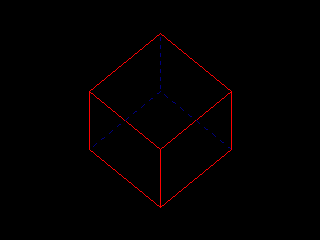

#Futurebasic how to#
The Beginner's Guide is primarily concerned with how to use the FB IDE and compiling programs. The Programming Guide offers far more detail on accomplishing specific tasks. La prima versione del QuickBASIC uscì il 18 agosto 1985 su un unico disco floppy 5.25'. È basato su GW-BASIC ma aggiunge tipi definiti dallutente, strutture avanzate, una grafica migliore, un supporto al disco avanzato e un compilatore. While programming is discussed, this is primarily to demonstrate the language syntax. Microsoft QuickBASIC (spesso abbreviato in QB) è un BASIC sviluppato dalla Microsoft per i sistemi MS-DOS. The Language Reference focuses on the FutureBASIC language and syntax. Language Reference and Programming Guide FixSDK solves the issue by restoring the missing files. Apple began removing specific key header files in macOS 10.7 which were needed by FutureBasic 5.
#Futurebasic software#
Since the Staz Software web site has disappeared, there doesn't seem to be any way to download this old. The link below details FutureBasic 5s installation options. I already know that version 5 is being made available as freeware, so there's no need to post the FBtoC Project information.

If you would like to contribute energy to the FB Documentation Project, please read our Style Guide for FB Documentation. I'm looking for either disk images or actual physical disk copies of old versions of FutureBASIC (I, II, 3, and 4).

FutureBASIC, also known as FB, is a compiled procedural BASIC dialect used to develop applications for Apple Macintosh family of computers. #define _stor(i) _asm_( "stwbrx %0, %1, %2" : : "r" (o#i), "b%" (i 1.0) s#i = 1.The Wikibook project supports the development of the FutureBASIC programming language. Void F32L24_48_8(double *v, float *ii, UInt32 *oo, long count) Static inline double _clip( register double B )Īsm( "fctiw %0, %1" : "=f" (result) : "f" (B) ) The important bits were in fact writing a (perl) script to find the 'right' meshing of operations to make the pipeline happy. All the tricks of the book were used here, but as you can see, very little 'assembly'. It converts audio back/forth between (little endian) 24 bits integer and floating point, 8 channels at a time.
#Futurebasic driver#
Here's a piece of a PCI audio driver I wrote all the way back then, for OSX. It was still a good idea if you wanted do stuff like altivec etc, but even in scalar code I'd often apply the same methods as before, just had to bench a hell of a lot more as something that 'looked' faster wasn't necessarily so. On g3, and especially G4/5 it became a lot 'harder' to write assembly that was faster than C, mostly because of the pipeline and the ram latency. This last thing helped my ass many times over when processor changed over time. VERY often just changing the C code a bit was enough to get the optimiser to do the 'right thing' - but even if not, I'd start with the original disassembly, convert it to an asm() statement, and tweak it from there, making sure I'd kept the C code as a 'master'. But I would never 'write from scratch' in asm I'd make the code in C first, disassemble it and see how bad/good it was. On pre-g3/g4 it was often a good idea to convert strategically from C to asm.


 0 kommentar(er)
0 kommentar(er)
